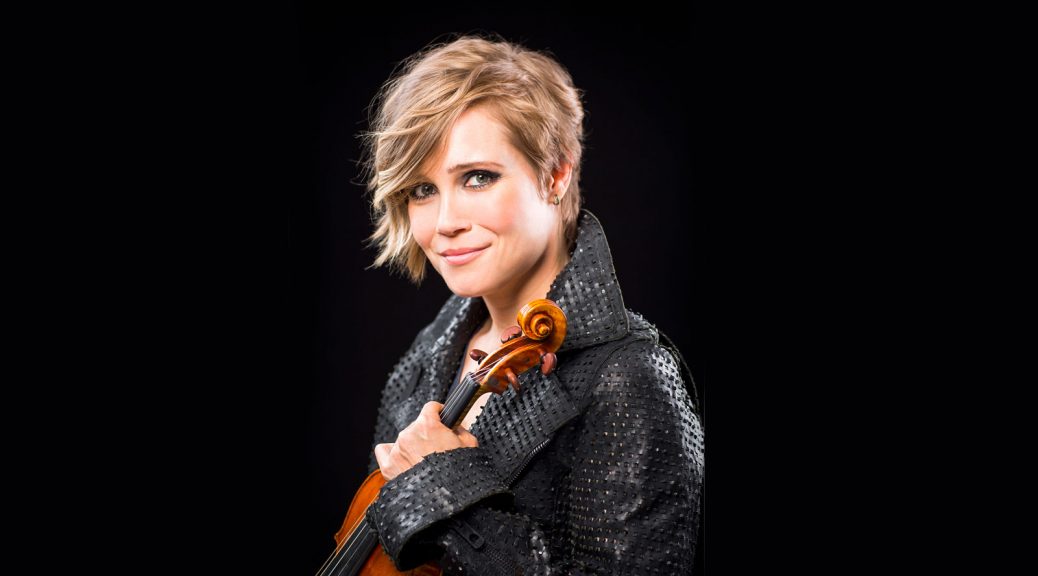
A Concerto for the Spirit of Today
Among today’s mid-career violinists, the Southern Californian Leila Josefowicz proves herself a true tigress. The more challenging the score, the more she relishes bringing it to life. Where others might cringe, she revels.
Composer-conductor Esa-Pekka Salonen wrote his violin concerto in 2009, and she’s virtually owned it ever since. Thorny, prickly, super-speed, clashing, call her violin role what you will. No concerto gives the soloist a more preponderant perpetuum-mobilerole and none I venture make greater demands on the soloist. I can almost see the spirits of past virtuoso greats like Jascha Heifetz on high, nodding sagely.
Her performance at Davies Hall also spotlighted the stellar SFS audience. Even though the half-hour concerto seems about as difficult for the listeneras any one else, at the end the crowd rose in ovation. The years of daring repertory under Tilson Thomas have opened up our ears here to new sounds, and people take to them, however jangling, as if devouring some exotic European confection.
Composer Salonen too innovates: a modernist who retains the structural integrity of the past. Often the soloist is backed by mere soft percussion of the deftest sort: glockenspiel, celesta, and a bow drawn across a vibraphone bar to set it tingling. (He also brings on exotica: log drum, tam-tam, even a dance-band drum set). And, diving deep, the winds get an added contrabass clarinet. Plaudits for both Clark Fobes on the latter and, for his extended solo, Russ DeLuna on his English horn. And the composer’s short closing figure was ingenious, like an unresolved musical question mark looking ahead to the next venture (Violin Concerto No. 2 perhaps??). He definitely launches his share of puckish surprises. I particularly like his very original private sonic world, as if ruminating in a distant cave.
Overall, especially in the opening “Mirage” movement, dark orchestral colors prevail in what we might call a Nordic sound spectrum (the composer is Finnish). And later, there are outbreaks, explosions (figuratively), and heavy drumming with dance rhythms on a trap set. Through it all, the violin prevails, fast and restless as ever, with high harmonics and double stops. Leila J. not only showed immense agility but also lyrical moments, particularly in her duet with the English horn far below.
The evening by the S.F. Symphony also featured Beethoven’s “King Stephen” written for Budapest, suggesting that the king must have been a bit lead-footed. The music hardly ranks about Beethoven’s most memorable overtures, nor suggests the Hungarian idiom (That other eminent Viennese, Johannes Brahms, had done similar Danubian ventures far more successfully).
The concert closed with Carl Nielsen’s unforgettable Symphony No. 5 of 1922, opening with a major snare drum solo recalling that World War One, while over, had never left the Dane’s mind.
MUSIC NOTES—Odd that in some 1,200 words about the Violin Concerto in the SFS program book, no one thought to mention that it had won for Salonen the Grawemeyer Music Composition Award, considered by many or most to be the most important composition prize in North America!
These concerts of Feb. 27-29 are the last ones with in nearly seven months for incoming Music Director Salonen taking the local podium.
S.F. Symphony with Esa-Pekka Salonen as both conductor and composer, in the Violin Concerto, Leila Josefowicz soloist. Davies Hall, San Francisco. Also Beethoven, Nielsen. For SFS info, call (415) 864-6000, or go online: www.sfsymphony.org.